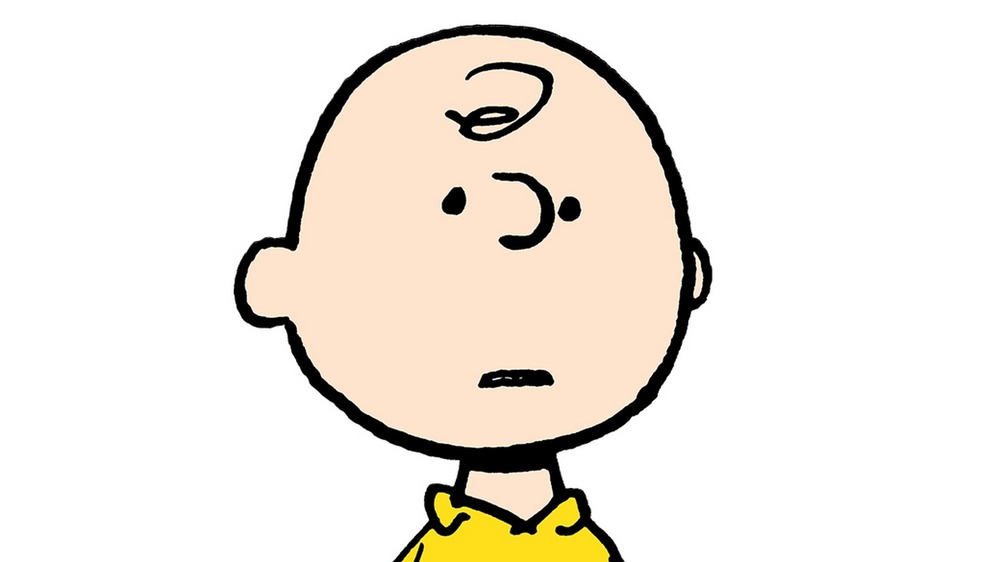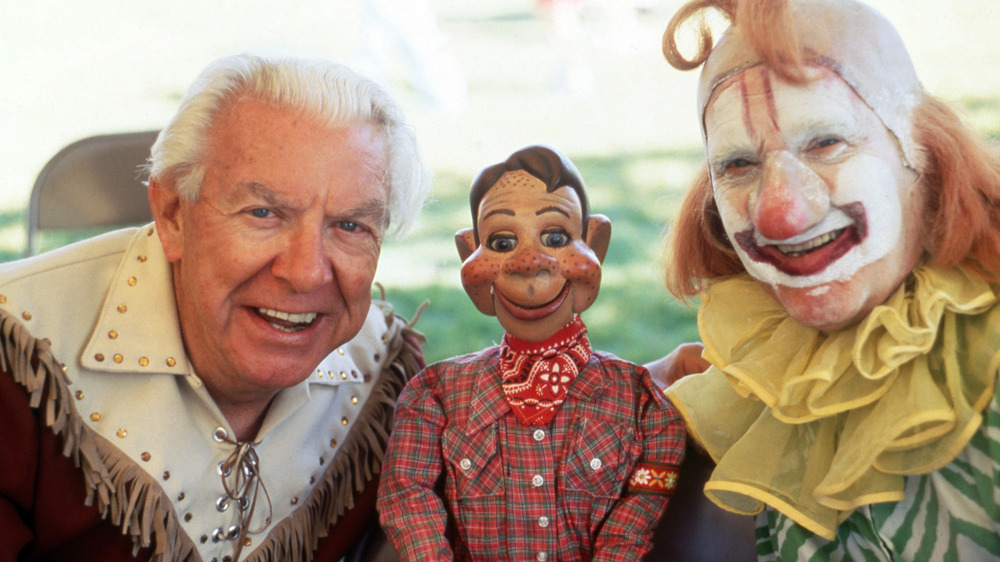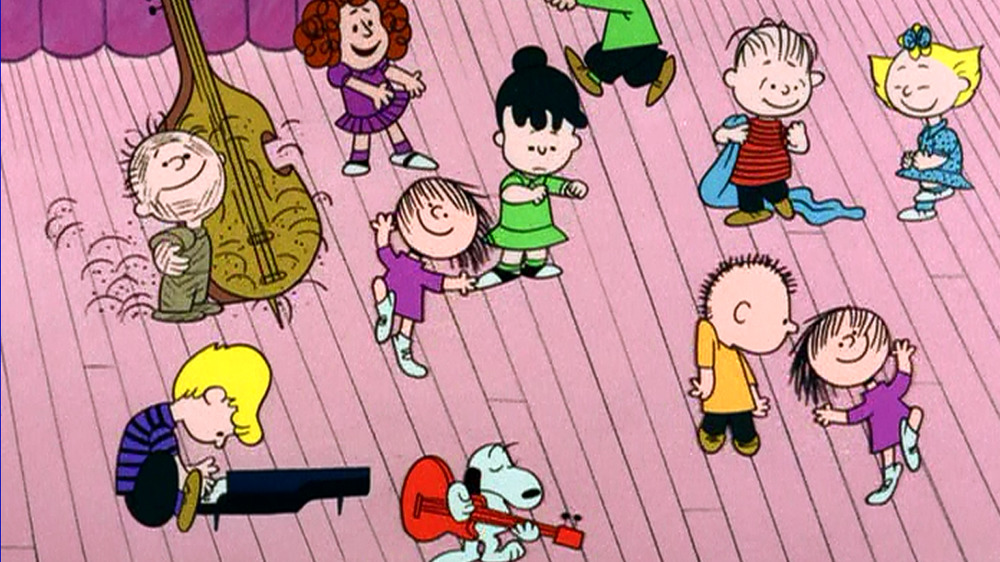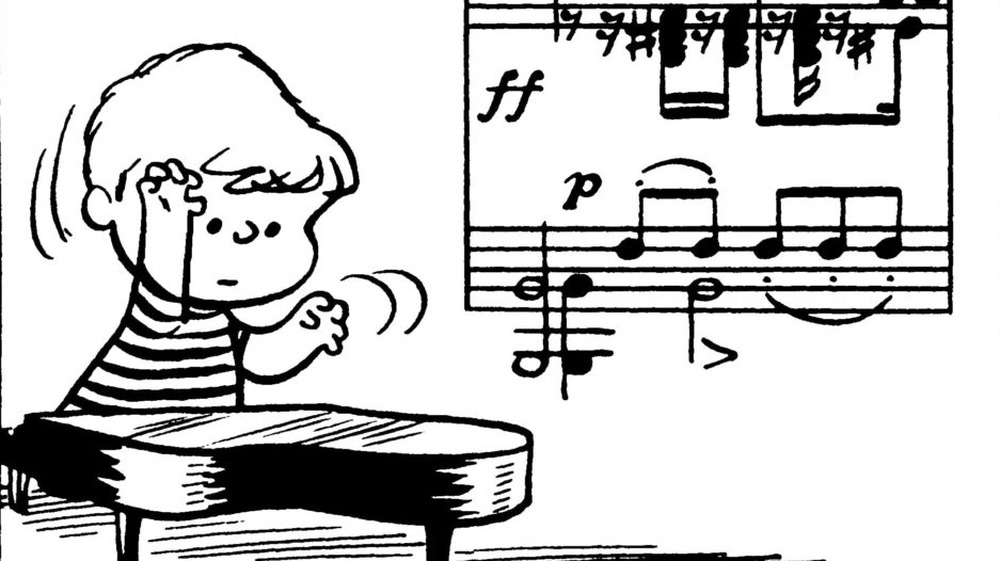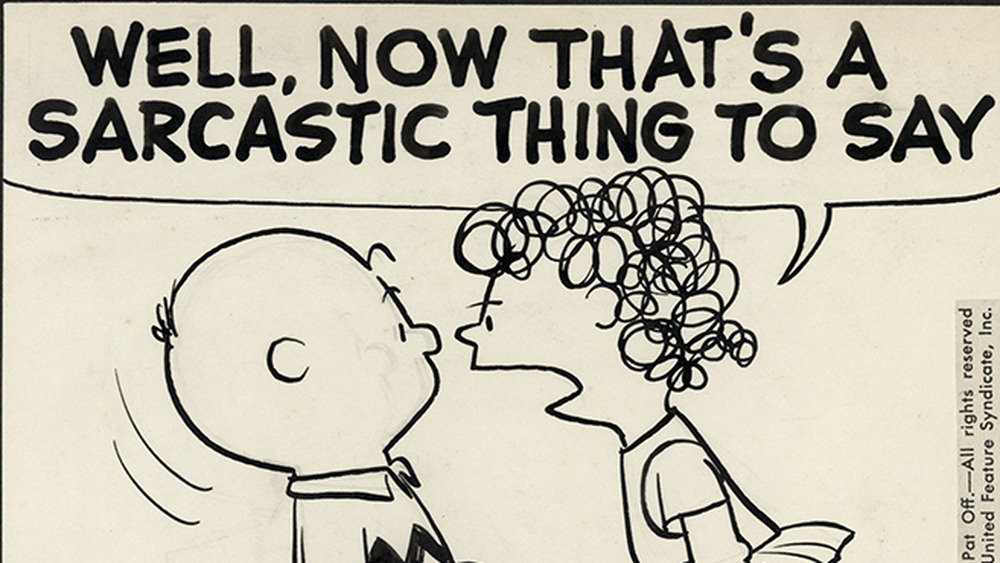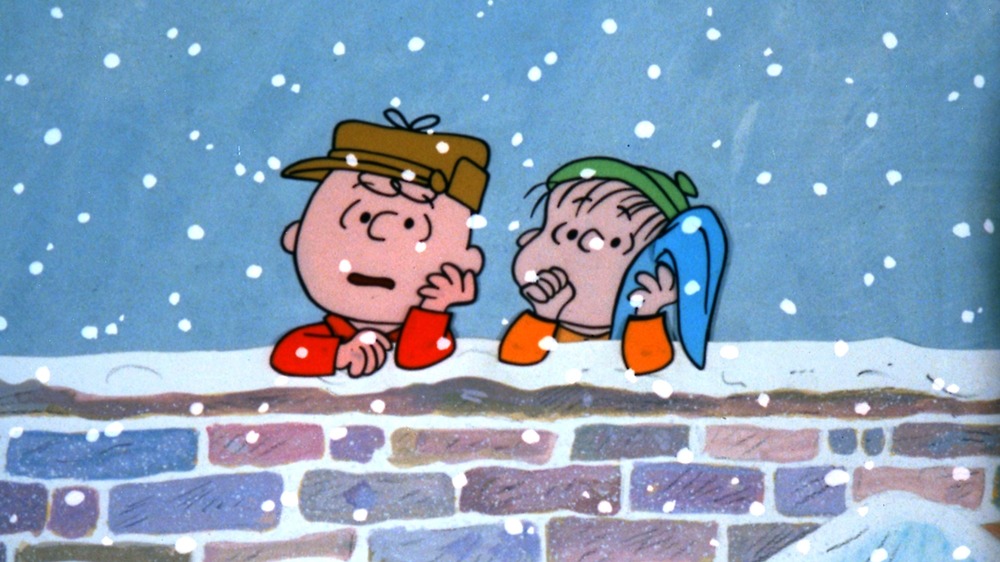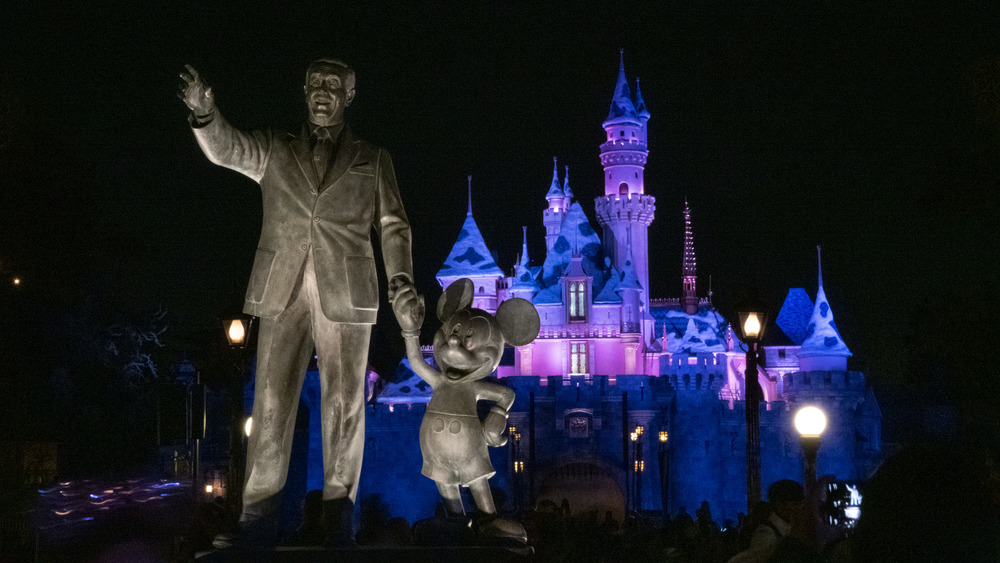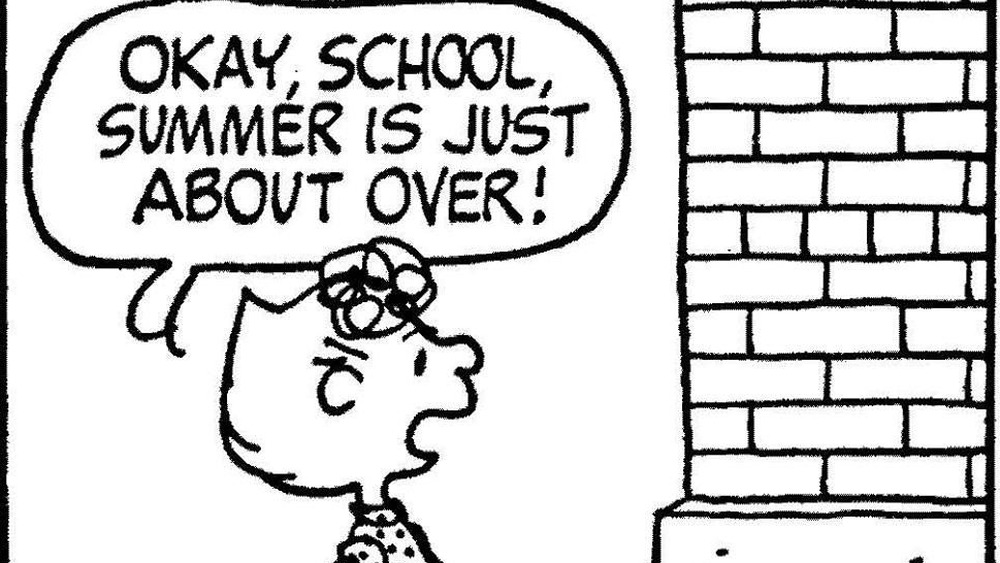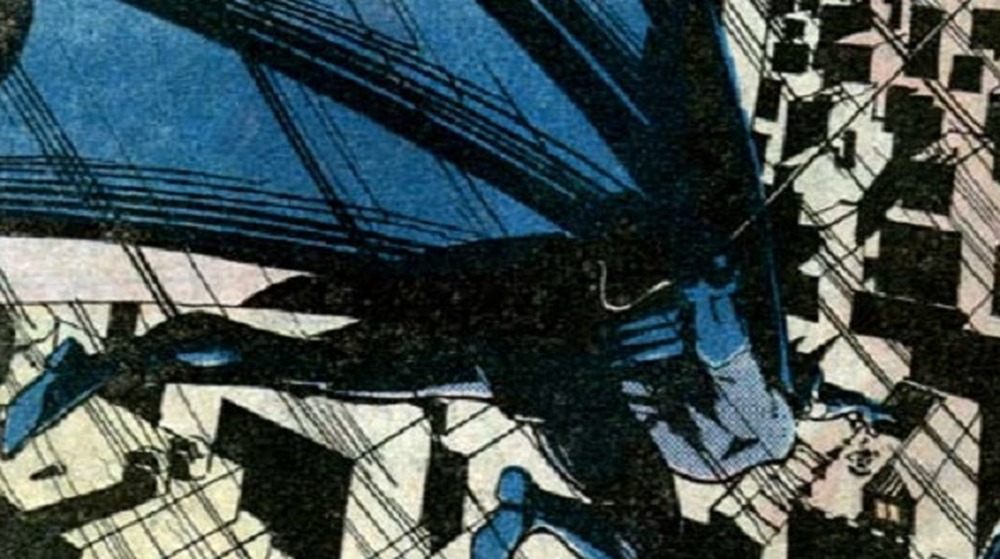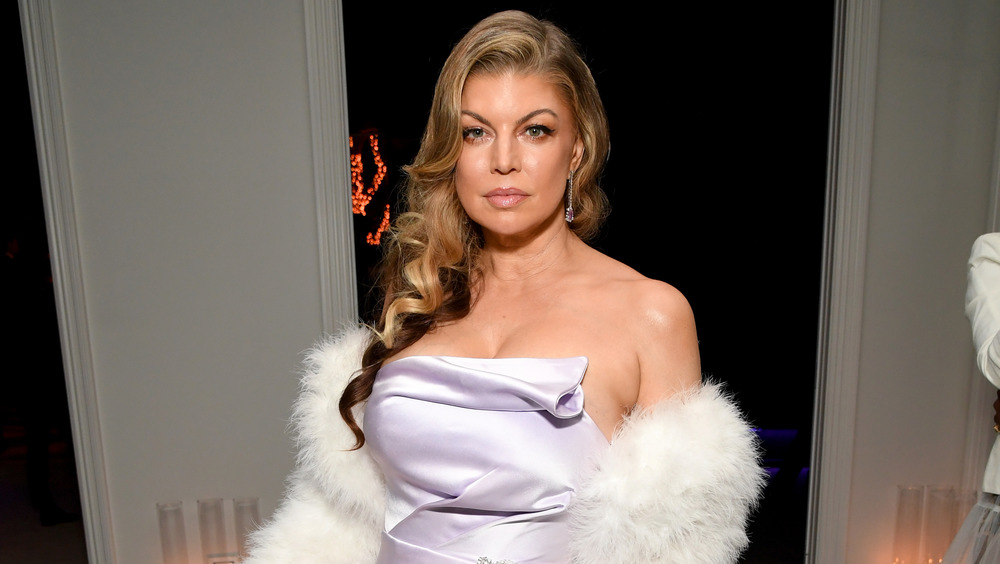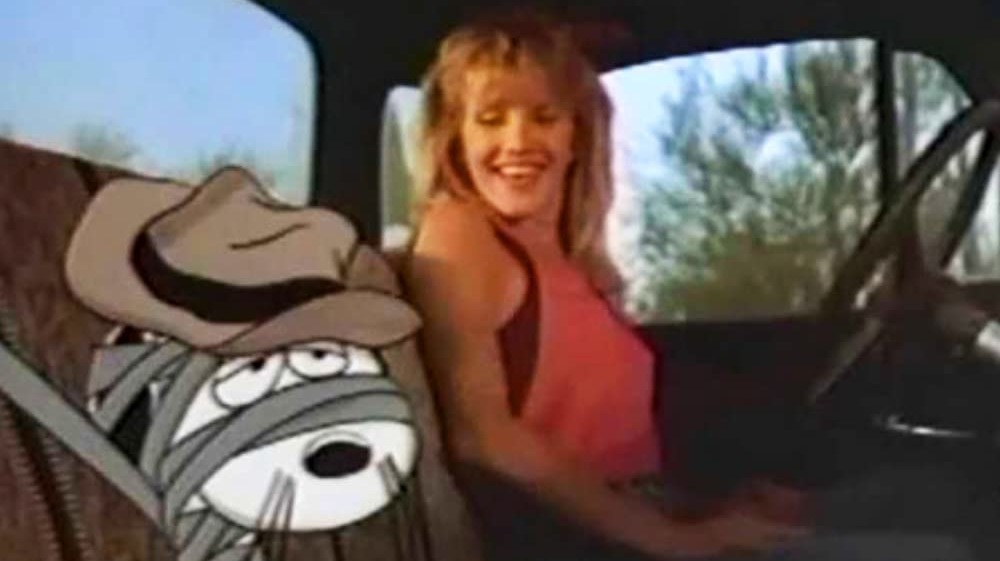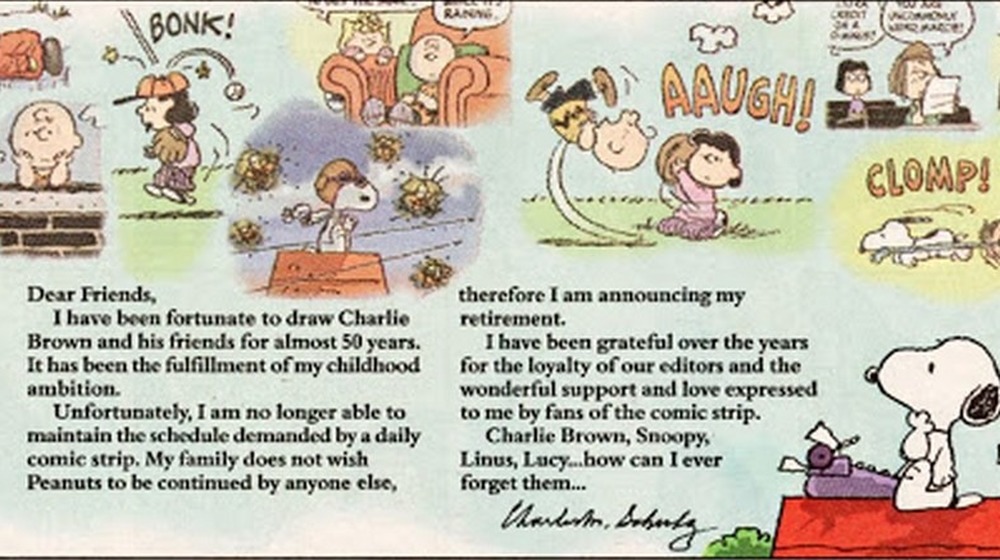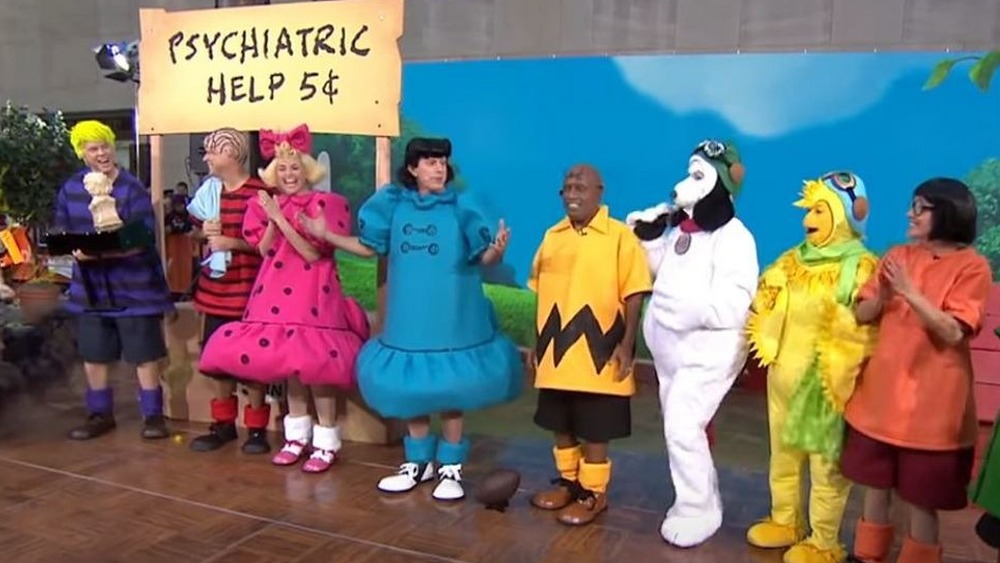The Untold Truth Of Peanuts
We've been talking about the generation gap at least since the '60s, and it's only gotten trickier to navigate since then, with new technology and social media changing the landscape so fast it can be hard to relate to people who were born just a couple years after you. But no matter what, every generation born since the middle of the last century still has one thing in common. We all grew up on Peanuts.
Ever since good old Charlie Brown first walked down the street on October 2nd, 1950, he and his many friends — Snoopy, Linus, Lucy, Peppermint Patty and the rest — have been inescapable in the newspaper, on TV, at the movies, and on every product imaginable. Creator Charles M. Schulz did what Snoopy never could — he created the Great American Novel four panels at a time, blowing past sentimental portrayals of childhood with a vision that was full of equal extremes of joy and pain, one that reflects all our lives, no matter how long it's been since we were kids ourselves.
And now there's a new version of these classic characters for a new generation of kids to grow up on, with The Snoopy Show debuting on Apple TV+. But it's been a long journey to get there, and like any long journey, it's full of stories. Here's just a few of them.
Peanuts' name came from a forgotten TV pioneer -- and Charles Schulz hated it
When Charlie Brown's creator Charles M. "Sparky" Schulz pitched a comic strip called Li'l Folks, Universal Press Syndicate liked the comic, but they didn't like the name. So they called it Peanuts instead.
The name may seem nonsensical to modern readers, but in 1950, readers would have recognized it from a kids' media franchise that its namesake eclipsed long ago. The Howdy Doody Show was one of the most popular shows on TV, starring puppeteer Buffalo Bob Smith, his marionette Howdy Doody, and a live audience of real kids, called the "Peanut Gallery." That expression was already old when Howdy Doody premiered, as slang for the rowdy audiences in the cheap seats. But somehow Schulz's editor got it in his head that kids were called "peanuts," so that's the name they went with.
Schulz told Dick Cavett that he went along with the new name because "I was so obsessed with drawing a comic strip all of my life that I was willing to take anything anyone gave me. And who was I to argue with United Features Syndicate?"
David Michaelis' excellent biography Schulz and Peanuts says, "Sparky was reported to have challenged [editor Larry] Rutman: 'What does it mean?' to which Rutman is said to have replied, 'Little things.' Sparky stubbornly insisted, 'Yes, but little insignificant things — things of little value.'" Throughout his life, Schulz valued his fictional children above all else — no wonder he took the title so personally.
Many characters came from life
Schulz has said that all his characters are partly him, but he did look to others for inspiration. As Schulz explained to Cavett, even Charlie Brown is named after a friend Schulz had taught alongside at Art Instruction Inc. in Minneapolis (as are Linus and Frieda). Schulz asked Brown's permission before using the name, and he says, "I can still remember the first day that I drew Charlie Brown, he came walking over, looked down at it, and said, 'Oh, I'm so disappointed. I was hoping I was going to look like Steve Canyon,'" the square-jawed action hero of Milton Caniff's comics.
Schulz's cousin Patty Swanson became Peppermint Patty, whose sidekick Marcie was modeled on Swanson's roommate. Snoopy's cousin Spike got his name from Schulz's childhood dog, who appeared in Schulz's first published cartoon, which appeared in Ripley's Believe It or Not when he was only fifteen.
Piano prodigy Schroeder came from a boy Schulz worked with at a St. Paul golf course, and Linus and Lucy got their last name as a tribute to his friends Fritz and Louanne Van Pelt.
Even Pig Pen has real-world origins — Schulz told Cavett, "Pig Pen came from a friend of mine...his little boy was running around the living room, and he says, 'Go to bed, Pig Pen!'" Michaelis also suggests Pig Pen's messy habits could have come from Schulz's own son Craig.
Schroeder grew up fast
One of the most mature characters in the Peanuts world is Schroeder, a child prodigy who can play Beethoven's most complicated symphonies on his toy piano, much like Schulz himself was able to capture truth and beauty in four little boxes of simple little drawings. Schroeder was even more of a prodigy when he first appeared, as a newborn baby. For the next few weeks, Schroeder was just an ordinary infant, until Schulz gave him his first piano and Schroeder began his pursuit of Beethoven. Soon, he was old enough to play on Charlie Brown's baseball team, and it wasn't long before, without explanation, he was the same age as the other characters.
His was the biggest, but Schroeder was not the only Peanuts character to go through a growth spurt. Lucy entered the cast as a toddler sleeping in a crib, and Linus began life as a newborn baby before Schulz decided Lucy and Charlie Brown were the same age and Linus was just a year or two younger. That's where Linus was by the time Charlie Brown's sister Sally was born, but in a few years, they were in the same class at school.
How some characters grow up while others stay the same age is a mystery, but not as much of one as how they've stayed in grade school for the past 70 years.
Schulz had some fun writing out a character
Before Sally, Woodstock, Peppermint Patty, and the others arrived, and before Charlie Brown and Snoopy evolved from a generic boy and his dog to the truly unique individuals they are now, Charles Schulz spent the first few years of Peanuts fumbling around for new characters to populate his world. Some stuck, and some didn't, but none stuck as little as Charlotte Braun, who only appeared 10 times between 1954 and 1955.
It seems likely Schulz was already losing interest by then, but you can blame the disappearance of Charlotte Braun at least partially on a fan named Elizabeth Swain, who wrote the cartoonist asking him to phase the character out. Schulz's reply shows an even darker sense of humor than you can see in his comics, saying, "Remember...that you and your friends will have the death of an innocent child on your conscience. Are you prepared to accept such responsibility?" and adding a doodle of Charlotte with an ax through her noggin.
Charlie Brown's original voice ended up a convicted felon
The stars of Peanuts reached the screen in 1965 with A Charlie Brown Christmas, under the capable hands of veteran Looney Tunes animator Bill Melendez. The transition was shockingly successful, maybe because Schulz's attentiveness to movement in his comics made them seem animated already. But it's also due to Melendez's many unusual artistic choices, from Vince Guaraldi's iconic jazz score to the casting of real, often untrained children as the characters' voices. In most animation, kids are played by adults, but the authenticity of the Peanuts specials' voice work preserves the essential truthfulness of the comics.
Peter Robbins, especially, captured the sadness and innocence of Charlie Brown in many of the character's most iconic appearances. But in real life, Robbins was much less innocent. After moving on to a career in real estate, he was imprisoned for multiple counts of felony harassment, including several against his ex-girlfriend and a plot to kill the county sheriff after his release from his first jail term. He has been diagnosed with bipolar disorder and has been seeking treatment. "I want to write a book about my experiences in jail, prison and what I have to look forward to," Robbins told San Diego's KWSB-TV, "Confessions of a Blockhead is what I'm going to call it."
You can find Charlie Brown at Disneyland
Millions of kids have wished they could meet Charlie Brown and Snoopy, and Knott's Berry Farm brought that dream a little close to reality when they introduced Camp Snoopy to their California theme park in 1983. The attraction gave children a place to meet costumed versions of Schulz's characters, ride on Charlie Brown's kite, and fly with Woodstock. Since then, Camp Snoopy locations have opened around the world, including Kings' Dominion in Virginia, Cedar Point, Ohio, and the Minnesota Mall of America. But while this might have been Charlie Brown's first officially authorized theme park appearance, he'd appeared earlier at the most famous park on earth.
In 1966, Walt Disney transplanted his "It's a Small World" exhibition for the 1964 World's Fair from New York to Disneyland. Ever since then, visitors have taken a boat ride around the world, as represented by over 300 animated dolls and a theme song by the Sherman Brothers, who scored numerous Disney musicals along with the Peanuts film Snoopy Come Home. But there's a more concrete Peanuts connection on the ride. As visitors exit, they sail past oversized postcards wishing them well in many different languages. There's also some giant stamps, including one showing a boat crowded with the simple, round faces of happy children. Hidden among them, you can find the original round-headed kid. Even with the minimalist artwork, it's still easy to recognize Charlie Brown from his W-shaped curl of hair and crooked smile.
One character actually died
Peanuts gets much darker than most of the all-happy-all-the-time world of kid's entertainment. It never tried to hide from readers or viewers that the world can be a deeply sad and lonely place, especially when you're a kid. But death was a step too far even for Schulz — with one notable exception.
In 1971, Charlie Brown's sister Sally started talking with the school building, yelling at it that she's on summer vacation and it can't do anything about it. In one strip from 1974 that's surreal even for Peanuts, the school talked back. Over the next month, Schulz let us in on the school's thoughts, threatening to drop a brick on Sally but also admitting it missed her over the weekend.
Sally and the school's relationship continued for two years, until in 1976, the school collapsed because "I had all I could take!" We can see thought balloons coming out of the rubble, but Schulz is still happy to confirm the darkest possible interpretation of this storyline when Sally introduces herself as "one of the pupils of the school that committed suicide." When pressed, she says, "Well, I happen to know it had been depressed for some time!" It's true — two days before it collapsed, the school thought, "I'd cry, but I hate to streak my windows." In the world of Peanuts, not even buildings are safe from existential despair.
Peanuts had some crossovers with Batman
Charlie Brown and Snoopy might not be Justice League material, but that hasn't stopped them from meeting Batman multiple times. In Frank Miller and David Mazzuchelli's classic Batman: Year One, we meet Gordon's corrupt predecessor, Commissioner Loeb, a collector of pop culture memorabilia whose office is full of Charlie Browns and Snoopys until he gets a visit from Catwoman.
In one series of Peanuts strips, we get some glimpses at a novel by Snoopy: "It was a dark and stormy night. Suddenly, a shot rang out! The maid screamed. A door slammed." And then, as a "sudden twist," "Suddenly, a pirate ship appeared on the horizon!" The next day, we see another passage: "As he touched her hand, she sighed..." and finally, "And they lived happily ever after. The end."
Writer Len Wein and artist Walter Simonson turned Snoopy's novel into a Batman story for the 500th issue. They had to get a little creative — the "pirate ship" is a model a bad guy tries to club Batman with — but it made for a memorable experiment, with no dialogue except for Snoopy's narration.
But Peanuts' most memorable Batman crossover was the creation of Kite Man, real name Charles Brown. Our Charlie Brown may never be able to get a kite in the air, but Kite Man has mastered a variety of gimmick kites, using one as a hang glider. In Hawkman, writer Tony Isabella revealed the characters' shared name, and gave the villain Charlie Brown's catchphrase, "Rats!"
Fergie appeared in the Peanuts cartoons
Bill Melendez's decision to use real kids for the voices in his Peanuts movies and specials meant that he went through multiple casts as his young stars aged out of their roles. Most of them faded into obscurity as they grew up, but one of the Peanuts voices blew up in a big way — but not the way anyone would have expected at the time.
Starting with the bizarrely dated It's Flashbeagle, Charlie Brown!, Sally Brown had the voice of a young actress named Stacy Ferguson. She continued in the role through the two-season run of The Charlie Brown and Snoopy Show, but later moved on from acting to focus on music as the lead singer of Wild Orchid.
After a few years with them, Fergie — as she was now known — shot up to superstar status when DJ/MC will.i.am invited her join his group the Black Eyed Peas. Their first album with Fergie was Elephunk, the record that made the Peas an industry juggernaut, with Fergie singing lead on megahits like "Imma Be," "Boom Boom Pow," and "I Gotta Feeling."
It's a little hard to imagine the artist behind hypersexual songs like "My Humps" and her solo hit "Fergalicious" as little Sally Brown, but her expensive lifestyle certainly seems like the kind of thing Sally would dream of. All she wants is what's coming to her. All she wants is her fair share!
Charles Schulz's daughter got a whole special to herself
Even a great artist like Charles Schulz couldn't resist the temptations of nepotism. In 1988, he co-wrote It's the Girl in the Red Truck, Charlie Brown with his son Monte, starring his daughter Jill. She does about as well as you'd expect from someone who got the gig just because her dad draws Snoopy. Despite the name, Charlie Brown and Snoopy only appear for a minute or two. Instead, the plot focuses on Jill as the titular girl in the red truck, who meets Snoopy's brother Spike in the desert. This causes some friction with her jealous boyfriend, and that's about all the story we get until the tacked-on climax where Spike gets caught up in a coyote hunt.
The special is not helped at all by Paul Rodriguez's maddening synthesizer score (even the music Spike plays on piano is synthesized!), which only looks worse compared to Vince Guaraldi's work on the classic specials. It hasn't aged well, and neither has the continuation of Peanuts' fascination with the aerobics fad after Flashbeagle. But Red Truck does feature some impressive blending of live action and cartoons, and Spike's animation is much more fluid and three-dimensional than anything you'd expect from the famously cheap Peanuts specials. But even that looks pretty bad next to Who Framed Roger Rabbit?, which opened the same year.
Everyone in comics teamed up to celebrate Peanuts' anniversary
In December 1999, Charles Schulz announced he would be retiring for health reasons. The final Peanuts comic would appear the following February, almost exactly half a century after the first. Schulz poured his life into Peanuts, and maybe there was none left for him without it. Though he had drawn the final episode weeks earlier, it appeared exactly one day after he died.
He left behind an overwhelming legacy, and that spring, over 40 cartoonists teamed up to commemorate Peanuts' 50th anniversary and Schulz's life, all of them coordinating to publish their homages the same day Schulz received a posthumous lifetime achievement award from the National Cartoonists' Society. After all, by 2000, many of them had grown up on Schulz's comics and even decided to get into the field because of his work.
On May 27th, 2000, you could open your paper to see the King of Id's night watchman spotting a beagle on a flying doghouse, Marmaduke "doing a Snoopy," Garfield lying on top of Snoopy's doghouse, and a father and child bonding over a classic Peanuts special in The Boondocks. The comics page wasn't the same without new Peanuts, but for just one day, we got to see just how much we'd lost.
The Today Show turned Peanuts into a nightmare
Schulz may have been less happy with the tribute the hosts of The Today Show paid to his masterpiece for Halloween 2015. To promote The Peanuts Movie, NBC's crew dressed up as Charles Schulz's most beloved creations, and if they're still beloved after that, it's in spite of the impressive effort these costumes put into ruining them. Bringing cartoon characters into the real world is always a tricky proposition, and The Today Show drove Charlie Brown and friends in a flaming semi truck straight into the heart of the uncanny valley.
What's the worst thing in this picture? Is it the misshapen prosthetic ears that are somehow too big and too small at the same time? Al Roker's shiny plastic forehead? The oversized shoes and socks? Tamron Hall's horribly detailed, greenish rubber feet? Meredith Viera and Carson Daly's attempt to recreate Linus and Pig Pen's scribbled hair by apparently dumping a basket of electric cords on their heads? Kathie Lee Gifford's faceless Woodstock, her mouth apparently frozen open in mid-scream, which the AV Club suggests attendees at the namesake rock festival might have seen if they'd gotten into the brown acid?
Fortunately, some silly and/or soul-scarring costumes aren't enough to tarnish Peanuts' legacy. The truthfulness and purity of Charles Schulz's vision is truly immortal, and we can all look forward to curling up with our grandchildren to watch A Charlie Brown Christmas many, many Christmases from now.
